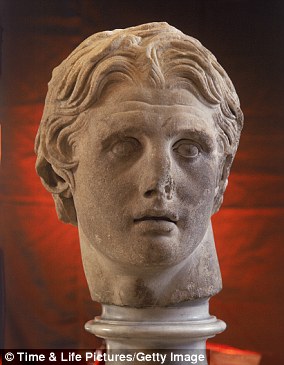Ancient Iraqis may have worshipped Alexander the Great: Archaeologists discover a temple where the Greek king was proclaimed ‘divine’ 2,300 years ago
>
The mystery surrounding a 4,000-year-old Iraqi temple has finally been solved, with archaeologists discovering evidence that Alexander the Great was worshiped as a divine figure.
Scholars were puzzled when they discovered more recent Greek inscriptions in the ancient Sumerian temple of Girsu, in the present-day city of Tilo.
Now, archaeologists at the British Museum believe that a Greek temple to Alexander the Great was founded at the site, possibly by Alexander himself.
The discovery of a silver coin minted by Alexander’s forces around 330 BC suggests that the conqueror may have visited the temple after defeating the Persians.
This would make the founding of the temple one of the last acts of Alexander’s life, shortly before his death at the age of 32.
The mystery surrounding a 4,000-year-old Iraqi temple has finally been solved, with archaeologists discovering signs suggesting Alexander the Great was worshiped as a divine figure.
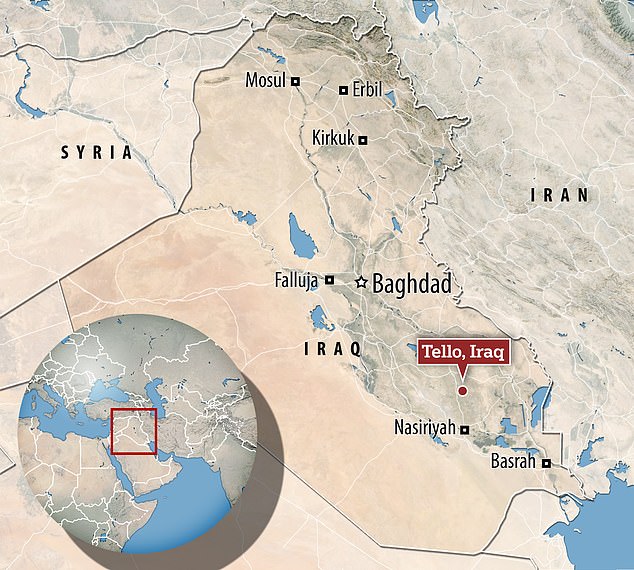
Archaeologists have successfully solved the mystery of finding Greek inscriptions in the 4,000-year-old Sumerian temple of Girsu in Iraq.
Girsu is believed to have been inhabited as early as 5000 BC, becoming a sacred city to the Sumerians and the spiritual home of their warrior god Ningirsu.
After excavations began in the 19th century, it appeared that a Greek structure might have been built on the site, but the only evidence was a mysterious tablet.
The tablet reads in Greek and Aramaic: “Adad nadin ahi,” meaning “the giver of the two brothers.”
What puzzled researchers is that the temple was abandoned in 1750 BC, more than 1,000 years before the birth of Alexander the Great.
British Museum archaeologist Dr Sebastian Ray believes the Greeks founded their own temple at the ancient site, perhaps to proclaim Alexander’s divinity.
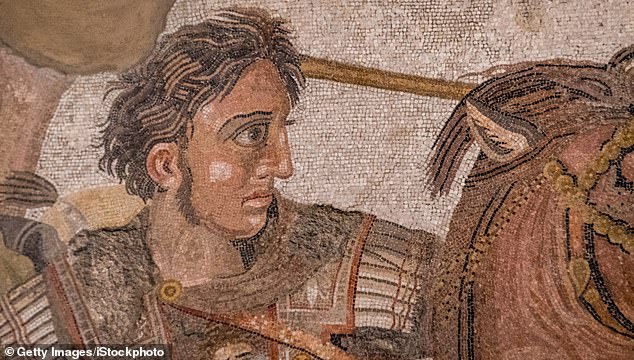
Researchers believe the temple may have been used to worship Zeus, who Alexander the Great claimed was the father and joint figure of the god Hercules and the Sumerian warrior god Ningirsu.
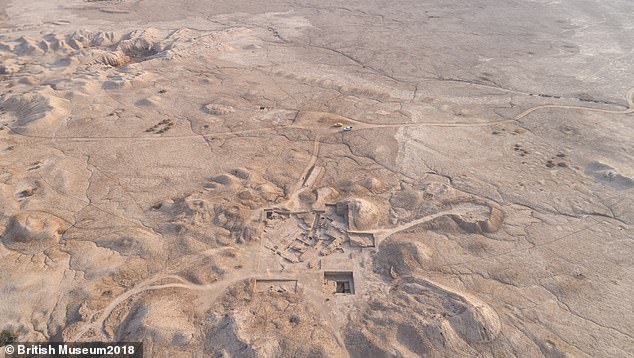
The temple was abandoned in 1750 BC, 1,000 years before the birth of Alexander the Great, indicating that these ancient civilizations had a deep and accurate understanding of their history.
‘It’s really amazing. “Our discoveries place the final temple in Alexander’s life,” Dr. Ray said.
“We found offerings, the types of offerings that would be made after the battle, and statues of soldiers and knights.
“There is a possibility, which we will never know for sure, that he may have come here, when he returned to Babylon, just before he died,” Dr. Ray said. Telegraph.
The discovery of the silver coin, along with an altar containing offerings commonly found in Greek temples, indicates that the site was used as a place of worship by Alexander’s forces.
The displays included terracotta knights which were very similar to the “escort cavalry” that formed the young conqueror’s bodyguard.
Researchers say this may mean that whoever made the sacrifices was very close to Alexander, or that these sacrifices may have been made by the conqueror himself.
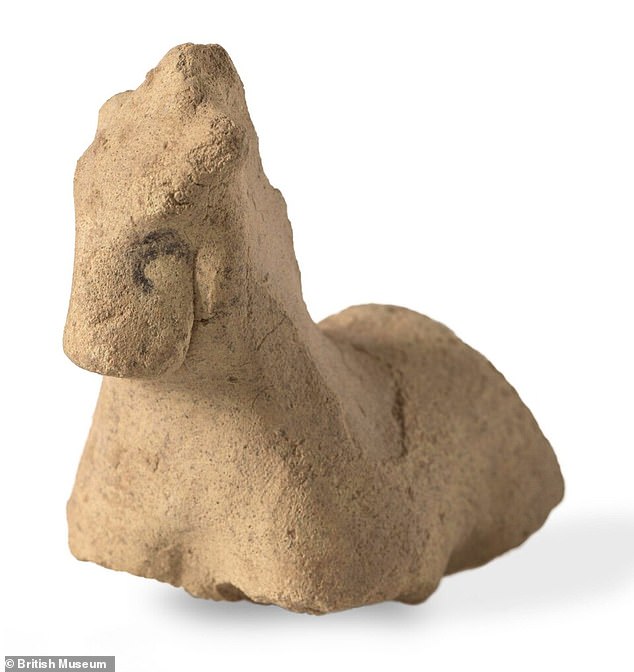
Offerings such as this clay horse suggest that the worshipers may have been part of Alexander the Great’s personal guard of “knight companions” or even that Alexander himself was among them.
The discoveries also shed light on the meaning of a mysterious Greek inscription found at the site that refers to the “donor of the two brothers.”
Alexander the Great took a keen personal interest in the character of Hercules and declared himself the son of Zeus while in Egypt, making him the brother of the legendary hero.
Alexander may have asked the Sumerian people who in their culture most resembled Hercules and was directed to the temple of the warrior god Ningirsu.
Dr. Ray believes the temple was dedicated to Zeus and the two brothers, a figure shared by Hercules, Ningursu, and Alexander the Great.
“This site honors Zeus and his two divine sons. The sons are Heracles and Alexander. This is what these discoveries suggest,” says Dr. Ray.
This theory also suggests that ancient cultures had a deep understanding of their history and a long cultural memory, knowing the exact location and use of the temple over a thousand years after its abandonment.
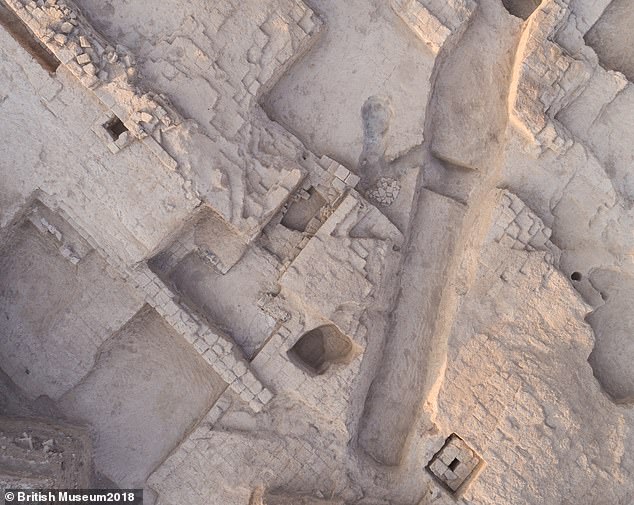
Much of the site has been damaged by previous excavations, but using drones and remote sensing technology, researchers have been able to pinpoint a larger hidden complex.
The city of Girsu was part of the Sumerian civilization, one of the world’s oldest civilizations that built the first cities and created the first codes of law.
While the city site was badly damaged by conflict in the 20th century and devastating excavations by French archaeologists in the 19th century, remote sensing technology points to a larger hidden complex.
In the fall of 2022, a team of researchers found walls and administrative records of a huge palace and the temple in which the Greek temple was later built.
The team working on the site believes that the temple was originally used for feasts, animal sacrifices and other processions dedicated to Ningirsu.
At the time of the discovery, Dr Ray said other scientists accused him of “making it up” and wasting money because of the belief that the site had already been fully excavated.
However, this discovery eventually led to a joint initiative to save endangered heritage sites led by the British Museum, the Getty and the State Board of Antiquities and Heritage (SBAH) in Iraq.
(Tags for translation) Daily Mail

